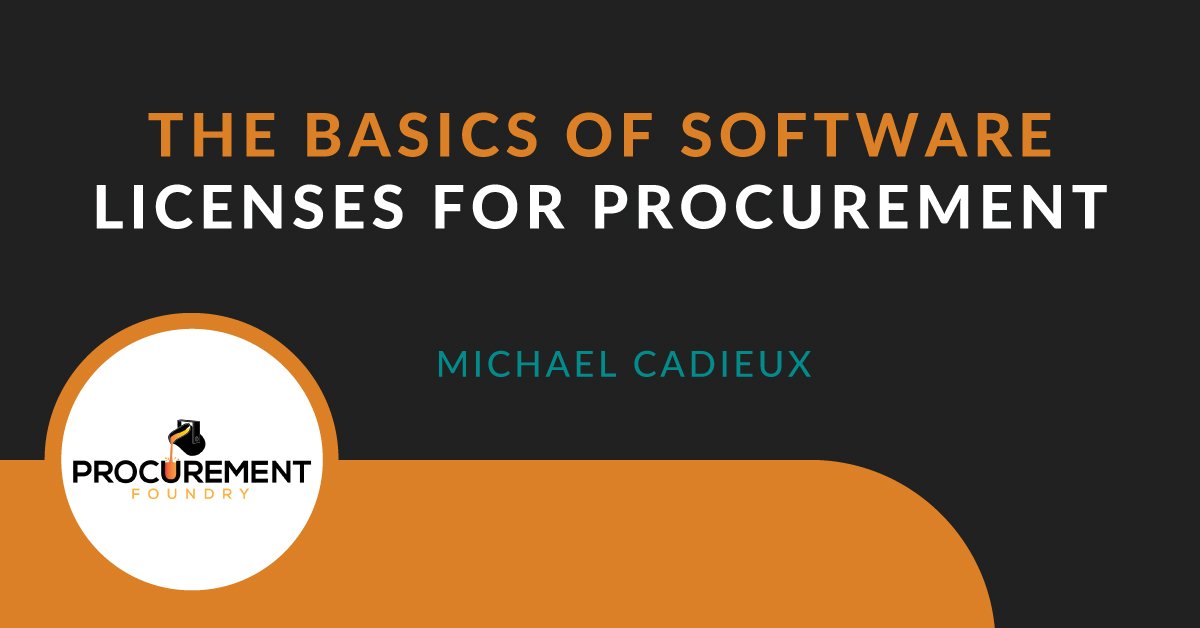Maximizing Savings Opportunities and Procurement's Strategic Value for CPOs
Saving money is not always about pinching pennies: advanced and data-driven insights enable you to identify real cost-saving opportunities, negotiate...

I have been noticing lately that there have been several discussions inside the Procurement Foundry that were focused on navigating software renewals and gaining a better understanding of the basics of software licensing for procurement. In fact, there were so many conversations circling around this topic that I figured it would be a good idea to write an article covering some of the main, most important points.
If you’re a procurement practitioner looking to renew a software agreement, it’s most likely something you are not looking forward to. You may even be dreading it entirely. This is because it is a known fact that understanding software licenses, particularly in IT procurement, can be pretty difficult.
So, let’s start with the basics, broken down in layman’s terms with the help of good old Wikipedia: What the software license does is provide the user with the legal right to utilize the software in the licensed environment (whatever the license specifically states that it covers). If the software license is categorized as what is known as a free software license, the user may also be allowed additional rights, such as the ability to legally make copies.
Let’s now take a closer look at proprietary software, which is also known as non-free software or closed-source software. This basically is used to describe computer software whose publisher or another entity has reserved at least some of the licensing rights. This reservation of rights allows them to use, modify, share modifications, or even share the software.
The exact opposite of open-source or the above-mentioned free software, non-free software also is the category that patent rights falls under. As for freeware, as its name suggests, it can be used at no cost, such as, for example, free trial or what is called “freemium” software. Finally, with open-source software, which comes with a free software license included, users have the rights to alter and redistribute the software, without having to pay a single cent.
Software pricing models come in a vast array of options, many accompanied by sometimes hidden or surprise added fees that make the task of attempting to pick the right one daunting. In fact, data from a GetApp survey posted on getapp.com showed that among the most common worries businesses had weighing on them when looking for software was the fear of spending too much money, with 44% reporting pricing as being one of their main concerns when selecting software for their business.
But it doesn’t have to be so scary, or overwhelming! Listed below are the most common pricing models broken down into simple, bite-size synopses:
As mentioned earlier, hidden costs cropping up is always a situation that companies dread. In order to help you stay mindful and navigate your way among these proverbial landmines, we have listed a few of the major hidden cost headaches here:
Clearly, there is much to consider when choosing what is best for you, and hopefully this rundown of the basics of software licenses will help you narrow down your options to select what suits you best. Should you need further help, including staying abreast with the current trends and everything software-related, we at Procurement Foundry are always here to assist you.

Saving money is not always about pinching pennies: advanced and data-driven insights enable you to identify real cost-saving opportunities, negotiate...

The topic of our recent roundtable discussion with a dozen Procurement Foundry community members—exploring potential flaws in procurement incentive...

Every 30 days or so, I get the same alert on my phone—“Your electricity bill is available for viewing.” I take a quick look, make sure nothing seems...